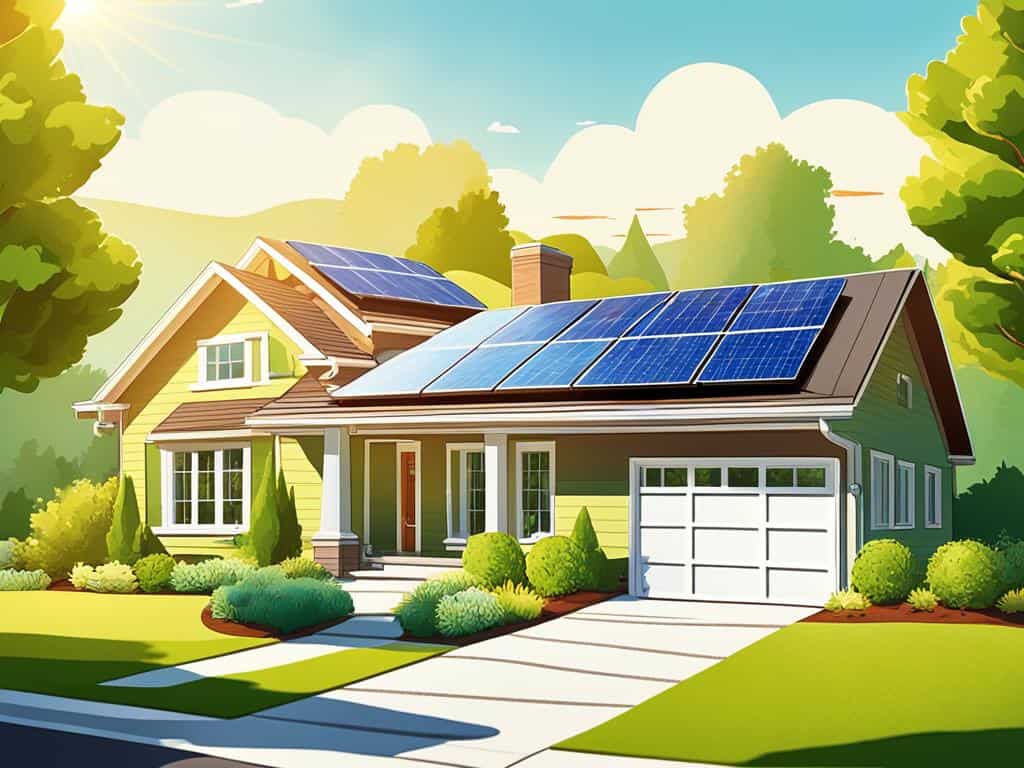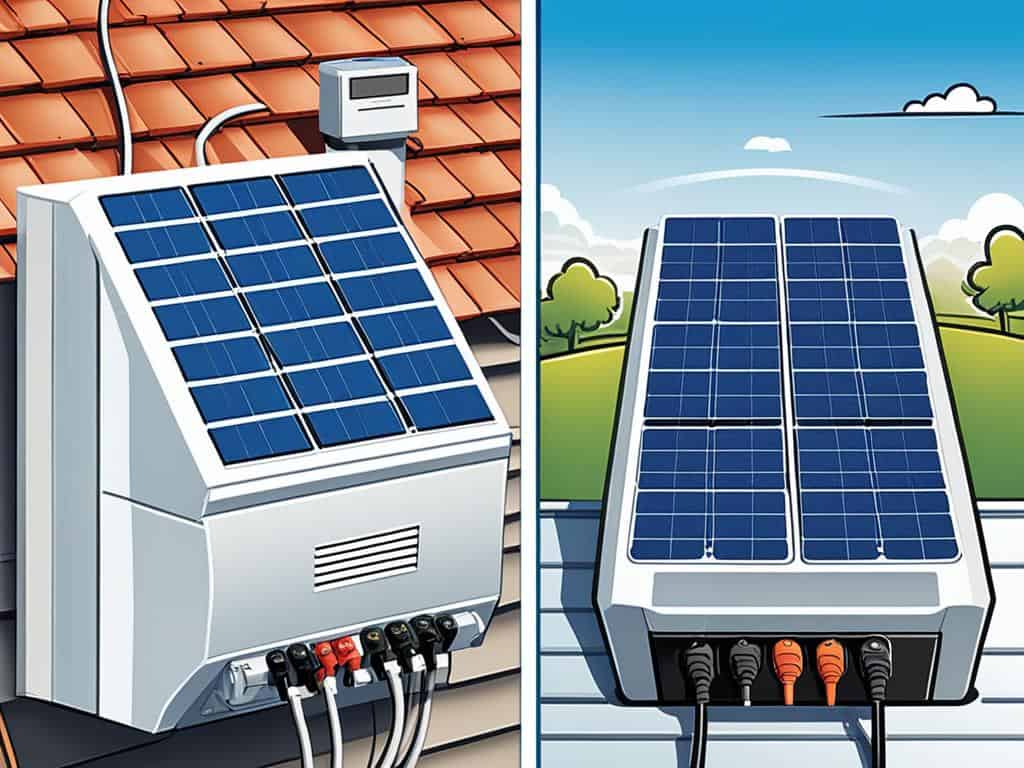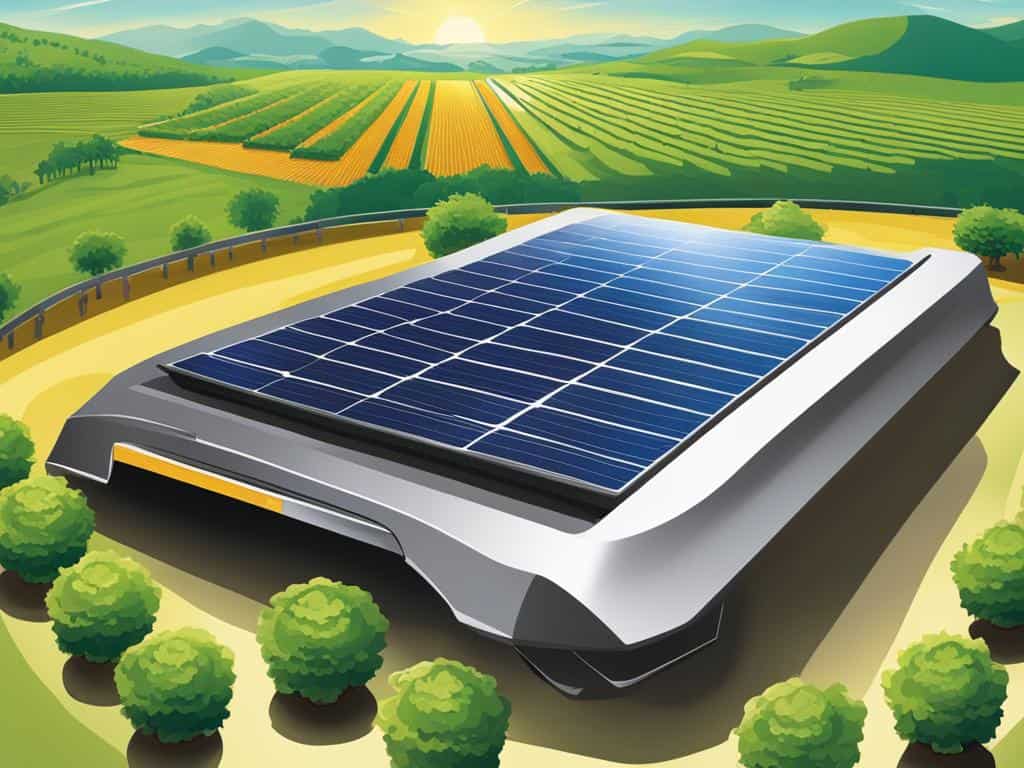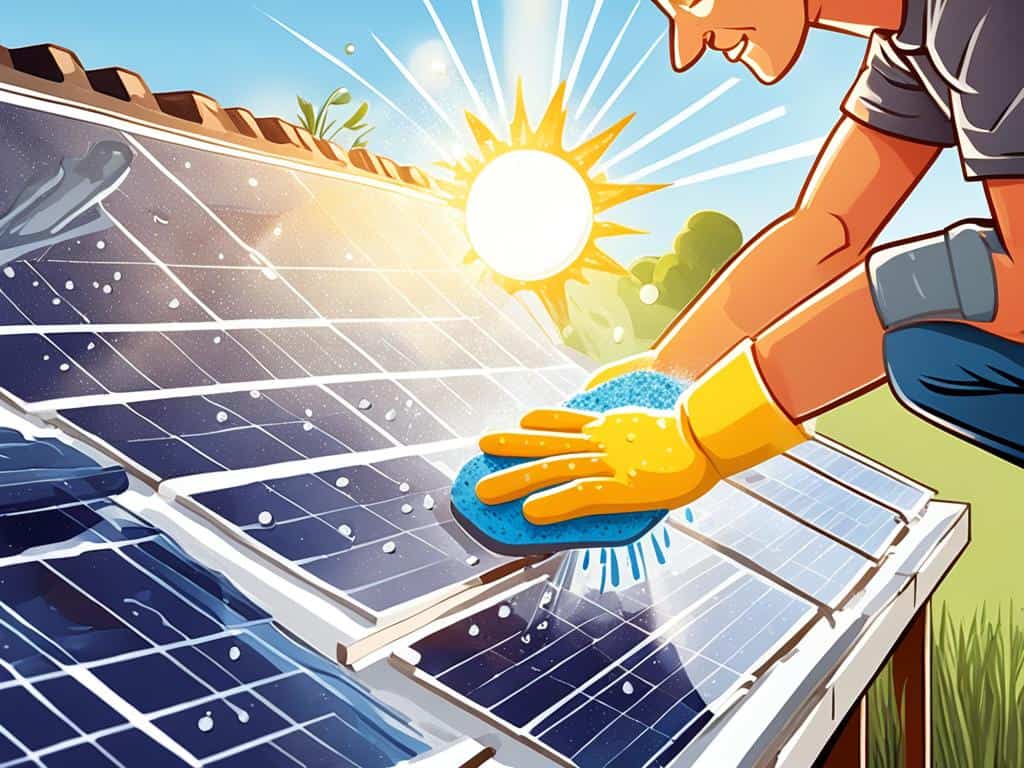Essential Guide to Solar Inverter Specifications
Unlock the power of the sun with our expert guide on solar inverter specifications tailored for optimal energy efficiency in India. Discover the best specs today!

Could India’s solar energy boom hinge on the complex nature of solar inverters? Let’s explore how solar inverter specifications are crucial. They’re not just small parts but key elements that increase efficiency and integration. They change sunlight into electricity. So, grasping solar inverter features is important for your green energy journey.
When thinking about essentials, it’s key to ask – are we using the best solar inverter specs? Do these match up with India’s growing use of solar power? Maybe there’s untapped latest solar inverter technology that could change how we use solar energy. With Fenice Energy’s help, we can ensure our investment shines as brightly as the sun.
Key Takeaways
- Importance of solar inverter specifications in enhancing the efficiency of solar energy systems.
- Evolution of solar inverters from mechanical to semiconductor-based electrical switches.
- The role of smart inverters in maintaining grid stability without traditional turbines.
- How advanced features like MPPT contribute to the maximization of power generation from solar arrays.
- Diversity of inverter types suited for different solar system setups, including stand-alone and grid-tie configurations.
- Understanding the necessity for seamless synchronization with the power grid to ensure safety and optimal performance.
Understanding Solar Inverter Technology
Solar inverter technology has brought a huge change in using solar energy. Inverters play a vital role in solar systems. They convert the DC power from solar panels into AC power. This conversion is crucial for the power to work with our grid and appliances.
Core Functions of a Solar Inverter
The main job of a solar inverter is to change solar energy into usable power. It not only changes DC into AC but also makes sure the power matches our needs. Their efficiency affects a system’s costs and performance.
Difference Between On-Grid, Off-Grid and Hybrid Inverters
On-grid solar systems work with the local grid but have no batteries. They can send extra power to the grid or use the grid’s power when needed. Off-grid systems are not connected to the grid. They use batteries to store all the power they need. Hybrid inverters combine features of both, managing storage, keeping a grid connection, and ensuring power during outages.
Advancements in Inverter Technology: MPPT and Beyond
New technologies like Maximum Power Point Tracking (MPPT) are improving inverters. MPPT helps get the most energy from solar panels, even in different weather. Smart inverters can also help the grid run smoothly by adjusting to changes and providing extra services.

As solar tech evolves, inverters become more sophisticated. Today’s inverters use advanced materials for better efficiency and strength.
- Solar inverter technology aids in keeping inverters operational through mild grid disturbances.
- Advanced inverters now even have the ability to start up an independent grid if a blackout occurs.
- Utilization of reactive power services aids in enhancing power consumption efficiency on the grid.
- Central inverters, string inverters, microinverters, and battery-assisted inverters cater to diverse solar energy applications.
Knowing how solar inverters work, the types of systems, and the latest tech is key for effective solar power use. Companies like Fenice Energy make exploring these technologies easier. This helps people contribute to a sustainable future.
| Inverter Type | Operational System | Price Range | Key Features |
|---|---|---|---|
| Off-Grid Inverter | Battery-Based Storage | INR 7,000 – INR 2,00,000 | Operates independently of grid |
| On-Grid Inverter | Connected to Electrical Grid | INR 50,000 – INR 7,00,000 | Bi-directional metering for export/import |
| Hybrid Inverter | Combination of On/Off-Grid | INR 1,00,000 – INR 10,00,000 | Seamless transition during outages |
The Role of Solar Inverters in Energy Conversion
Solar inverters play a crucial role by turning solar panel power into usable electricity for our homes. They change the sunny energy from solar panels into the type of current that powers our gadgets. This process is key for solar energy efficiency and making sure we get the most from our solar panels.
Fenice Energy, a leader in clean energy, offers four main kinds of solar inverters. Each type is for a different situation. There are stand-alone inverters for places without electric grids, grid-tie inverters that work with the grid, battery backup inverters for extra security, and smart hybrid inverters that offer the best of both worlds.
The secret to great solar energy efficiency is something called Maximum power point tracking (MPPT). This special technique helps solar inverters get the most energy from solar panels. Fenice Energy uses smart MPPT methods to ensure not a single bit of sunlight goes to waste. This effort improves solar panel to inverter efficiency.
Grid-tie inverters are even more advanced. They work smoothly with the utility grid to share energy. Importantly, in power outages, these inverters shut off automatically. This keeps the grid and repair crews safe.
- Solar pumping inverters, using MPPT, directly power water pumps with solar energy. This is very helpful for farming in remote places.
- Three-phase inverters make energy storage less needed by spreading power out efficiently.
- Microinverters and string inverters each have their own benefits, like needing less energy storage or lasting longer with a 25-year lifespan.
For big energy needs, central inverters over 400 KW are crucial for solar farms and big companies. The Indian market has a wide range of off-grid and grid-tied inverters. They fit small houses or big businesses, with prices and sizes from small 500 VA ones to huge 50 KW options.
| Inverter Type | Capacity (India) | Cost (INR) | Typical Use Case |
|---|---|---|---|
| Off-grid Inverter | 500 VA – 50 KVA | Rs 3500 – Rs 3,20,000 | Remote or standalone systems |
| Grid-tied Inverter | 1 KW – 50 KW | Rs 19,000 – Rs 2,30,000 | Urban homes, net metering |
| Hybrid Inverter | 3 KW – 50 KW | Rs 71,500 – Rs 7,90,000 | Systems with battery backup |
Fenice Energy designs grid-tied inverters to start up with even a little sunlight. This way, no solar energy is wasted. Off-grid systems follow their own rules but aim to maximize energy use.
Fenice Energy is always finding the latest tech for their inverters. They make sure the inverters work well, even in low light. They choose very precise MPPT controllers to optimize power transfer.
Having a good match between your inverter and solar panels is vital. It matters whether you’re a home looking to save on bills or a business wanting to be greener. Choosing the right inverter is key to success.
Discussing solar inverters means talking about new ways to make solar energy better. Fenice Energy is dedicated to bringing top-notch and reliable clean energy solutions to India.
Comparing Solar Inverter Types
When looking into solar power for homes or businesses, choosing between string inverters and microinverters is key. It’s essential to weigh up how string inverters and microinverters perform, their costs, and where they work best. String inverters control several panels together. They are less costly and easy to manage, making them great for big solar projects. On the other hand, microinverters are attached to each panel. They boost the performance of each panel, even if some are in the shade or not facing the right way.

Now, hybrid inverters are also in the mix, blending the best of solar and battery inverters. To get what hybrid inverters are about, check out these points:
- They add the flexibility for future growth, combining DC to AC conversion, power control, and energy tracking.
- Grid-tie hybrids can feed extra power back to the grid, cutting energy bills.
- FSP’s PowerManager Hybrid 10kW is praised for its various modes and can work with up to 6 units together.
Let’s look at the UTL hybrid solar inverters. They show a wide range in price and features:
| UTL Hybrid Inverter | Price Range (INR) | Special Features |
|---|---|---|
| Sigma+ Solar Inverter | 33,303.00 – 2,11,578.00 | Varies by model and capacity |
| GAMMA+ MPPT Solar Inverter | 12,009.00 – 13,228.00 | 30% extra solar energy generation |
UTL Solar talks about what makes an inverter efficient. This includes being cost-effective, having an LCD screen for easy checks, using advanced rMPPT technology, and working with many battery types. For the Indian market, here are some points:
- Hybrid inverters can help cut down on grid power use, making for a greener footprint.
- While starting costs are higher, benefits like better PV system management and detailed monitoring promise savings over time.
- Inverters make up about 25% to 30% of a solar setup’s cost, with a 10Kva unit costing ₹57,000 to ₹63,000.
- The top efficiency of a 10Kva solar inverter goes beyond 98.3%.
With all the choices and details available, selecting between string, micro, and hybrid inverters depends on your specific needs. Knowing their uses, costs, and advantages helps users make a smart choice. This leads to the best use of their solar energy and supports a sustainable energy future in India.
Solar Inverter Specifications
Homeowners in India looking to use solar energy need to know inverter specs. This includes looking at efficiency ratings and understanding how long warranties last. Knowing this helps get the most out of solar energy.
Analyzing Inverter Efficiency Ratings
Inverter efficiency ratings show how well a system turns solar energy into power. The higher the rating, the less energy is wasted. For example, some solar inverters are up to 98.2% efficient. This means they’re really good at using the energy from solar panels.
This efficiency leads to less carbon emissions and more savings. It’s a key part of choosing the right inverter.
Importance of Inverter Sizing: Matching with Solar Panel Output
It’s crucial to match inverter sizing with solar panel output. This ensures your solar panels and inverter work well together. If they don’t, you could lose out on energy or put too much strain on your system.
For instance, a 4 kW inverter works well with a 3.5 kW solar panel setup. This match helps avoid energy loss and keeps things running smoothly.

Understanding Inverter Warranties and Longevity
Inverter warranties tell you about solar inverter longevity and durability. A good warranty, from 5 to 25 years, shows the maker’s trust in their product. It means the inverter should last long and work well in India’s weather.
Companies like Fenice Energy offer long warranties and great support. They test their products and help customers, showing they stand by their inverters.
Efficiency, size, and warranties are key when choosing solar tech. Brands like Tanfon offer great efficiency. And Fenice Energy provides products you can trust for a long time. These points help homeowners make smart, sustainable energy choices.
Installation and Operational Factors for Solar Inverters
The solar inverter installation process is key for a solar energy system’s success. Knowing how solar inverters work is vital for efficient and reliable electricity conversion. A good solar system setup increases the inverter’s lifespan and performance, eases use, and limits maintenance needs.
Experts should do the solar inverter installation for the best setup. This includes finding the best spot to prevent overheating, secure connections to PV modules, and following electrical safety rules. Operational factors for solar inverters involve handling different electrical loads, working well in Indian weather, and fitting with home wiring.
Key facts about solar inverters include: String inverters have a 25-year life and a 5-year warranty. Micro-inverters work well for single panels. Off-grid inverters in India range from Rs 3500 to Rs 3,20,000 and 500 VA to 50 KVA. Grid-tied inverters turn off without utility power, with capacities from 1 KW to 50 KW.
- Solar inverters use Maximum Power Point Tracking (MPPT) for the best power from PV arrays.
- Many solar inverters protect against lightning and line faults, important for India’s weather changes.
- It’s critical to keep PV modules working well, with a warranty for 90% efficiency for at least 10 years.
When choosing a solar system setup, cost is one of many factors. The inverter’s efficiency and resilience, its fit with the PV array, and operational needs matter too. For people in India, the right solar inverter means reliable energy, balancing cost and performance for lasting benefits.
Fenice Energy offers full solar solutions with high-quality inverters for different uses. Picking and using the right inverter is crucial for the best solar power management in India.
A well-done solar inverter installation and good operational plan mean a reliable and efficient solar system. The aim is to get the most out of solar technology for a sustainable life. With smart installation and quality products, solar inverters will be key in India’s clean energy future.
Maximizing Solar Investment: High Efficiency Solar Inverters
The solar industry is booming. It’s key to know how solar inverters play a role in this growth. Finding the best value involves looking beyond the price tag. It’s crucial to consider long-term savings and the benefits of advanced features.
Comparing Cost vs. Performance for Best Value
High-end solar inverters might seem expensive at first. Yet, their superior performance can lead to significant energy savings. They’re also durable and need less upkeep. These factors greatly improve the return on your investment.
Top-Rated Solar Inverter Specs for Optimal Performance
For the best performance, go for inverters with cutting-edge features. The latest models are highly efficient, even in India’s tough conditions. Features like long warranties and connectivity options make these inverters stand out. They ensure reliability and efficiency at the highest level.
| Feature | Specification | Benefit |
|---|---|---|
| Input Voltage Range | 80-550V | Allows flexibility in system design and improved performance in varied lighting conditions. |
| Operating Temperature Tolerance | -25°C to 60°C | Ensures consistent performance across India’s diverse climatic zones. |
| Connectivity | Wi-Fi, Ethernet, App Integration | Enables remote monitoring and management of the solar system. |
| Warranty | 5-15 years | Reflects product reliability and manufacturer’s confidence in their product. |
Selecting Inverters for Indian Climates
Choosing solar inverters for India is about climate adaptability. A good inverter handles extreme temperatures and unpredictable weather without losing efficiency. It’s important they work well under varied conditions to provide steady energy.
Conclusion
In India, clean energy is gaining popularity. People here are choosing to invest in solar technology. This isn’t just good for the environment; it’s smart because India gets a lot of sunlight. Solar inverters help homes switch from relying on the grid to making their own energy. There are many inverter types like stand-alone, grid-tie, and intelligent hybrids. Each one meets different energy needs.
Grid-tie inverters work well with utility lines but won’t back up your power during an outage. Other inverter types can. Advanced MPPT systems help solar inverters work better by adjusting to changing weather. This makes the most of solar panels, whether for powering pumps or providing electricity without needing lots of storage.
Choosing the right solar inverter in India can save money and help the planet. Companies like Fenice Energy have been making these solutions for over twenty years. They use high-quality parts to ensure their inverters deliver reliable power. Their products are built to last and perform well. So, when adding a solar inverter to your home in India, consider its efficiency, technology, and how well it works in your climate. Pick one that makes the most of India’s solar energy.


